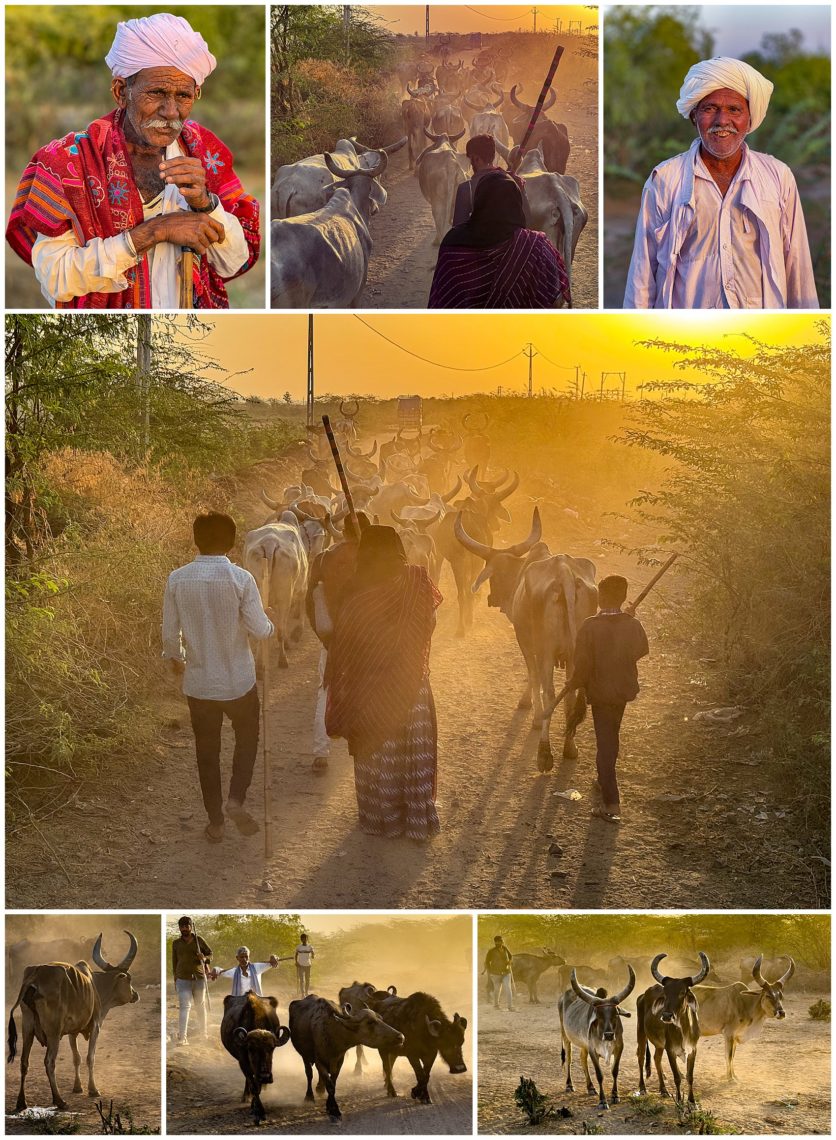
There are approximately 162 tribal villages surrounding Bhuj in the state of Gujarat. There are various tribal people in the Bhuj area, including the nomadic Rabaris, who are constantly in search of better grazing ground.

Bhuj is known as the textile hub of India and is famous for their embroidery and handicrafts. We visited tribal villages on the north and south side of Bhuj. Fabric is dyed in large vats, then dried in the sun. One village specialized in making hand stamped patterns.
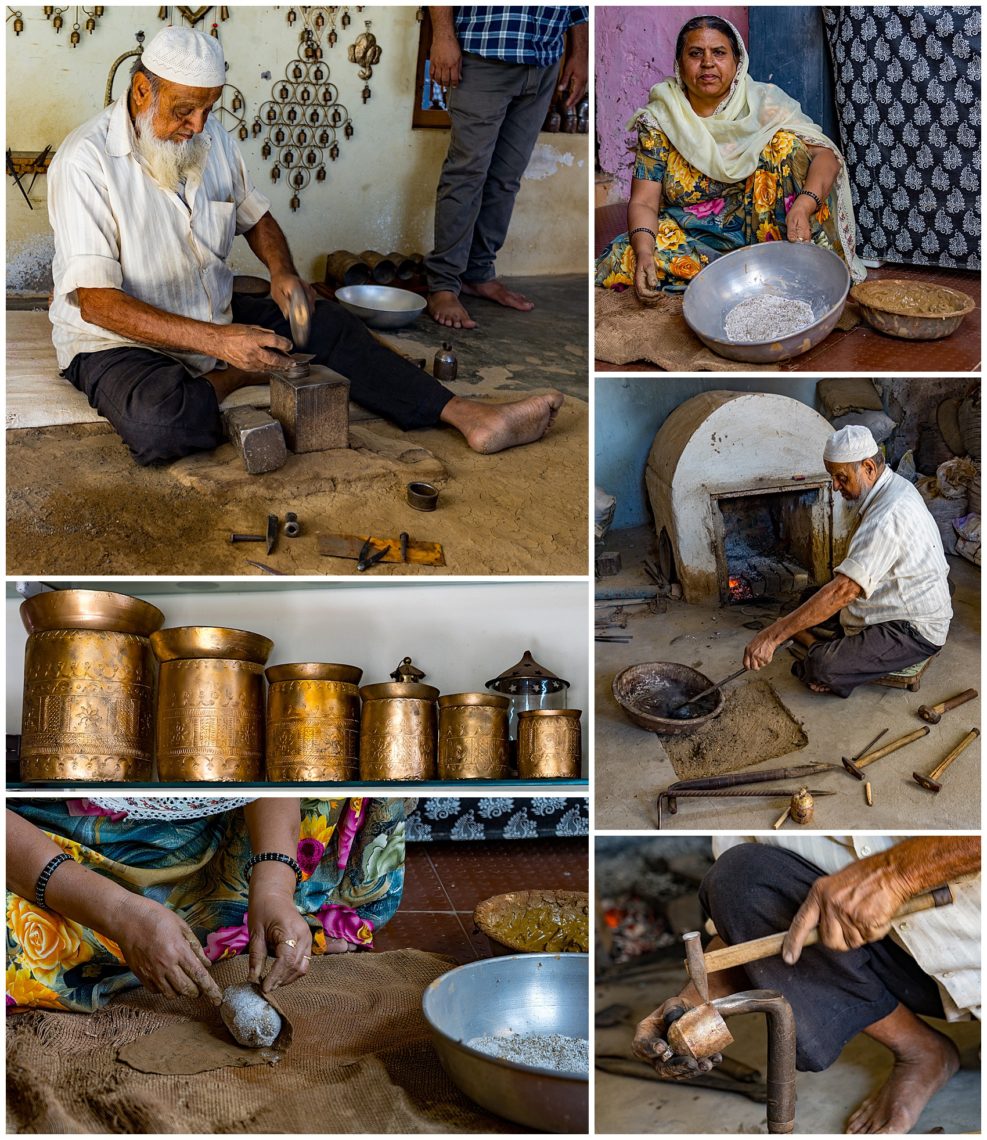
Another handicraft was making metal items for cooking, where the craftsman forms each piece by hand. The wife coats the copper pieces (top-right and lower-left), which is then oven baked (middle-right), ready to be used (middle-left).
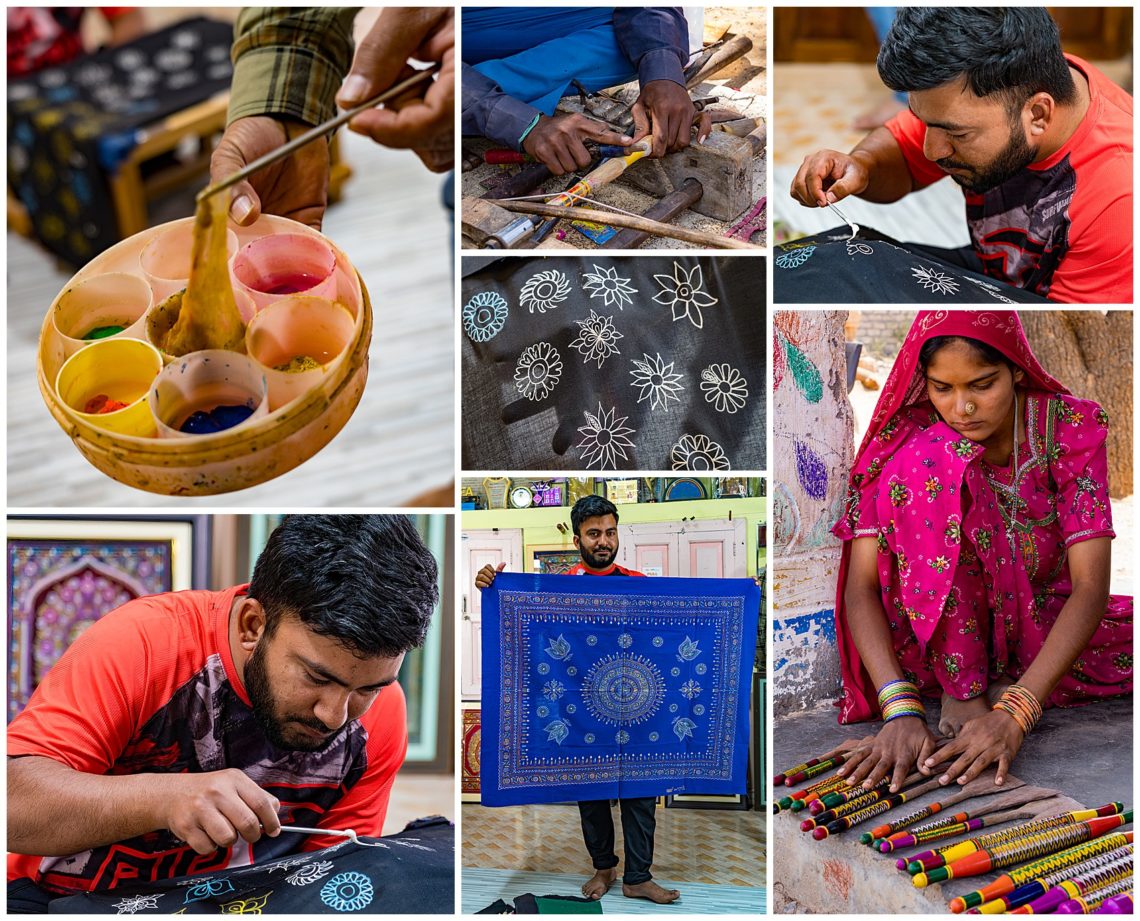
We saw a large variety of handicrafts being produced, including textiles, tie-dye, vegetable color dye printing, and lacquer making. Some of the patterns are quite intricate, with the artisan painting each design by dripping a special paint onto the fabric (top-right, middle, bottom-left and middle). The lacquered rolling pins are still made with crude wooden tools (top-middle and bottom-right)
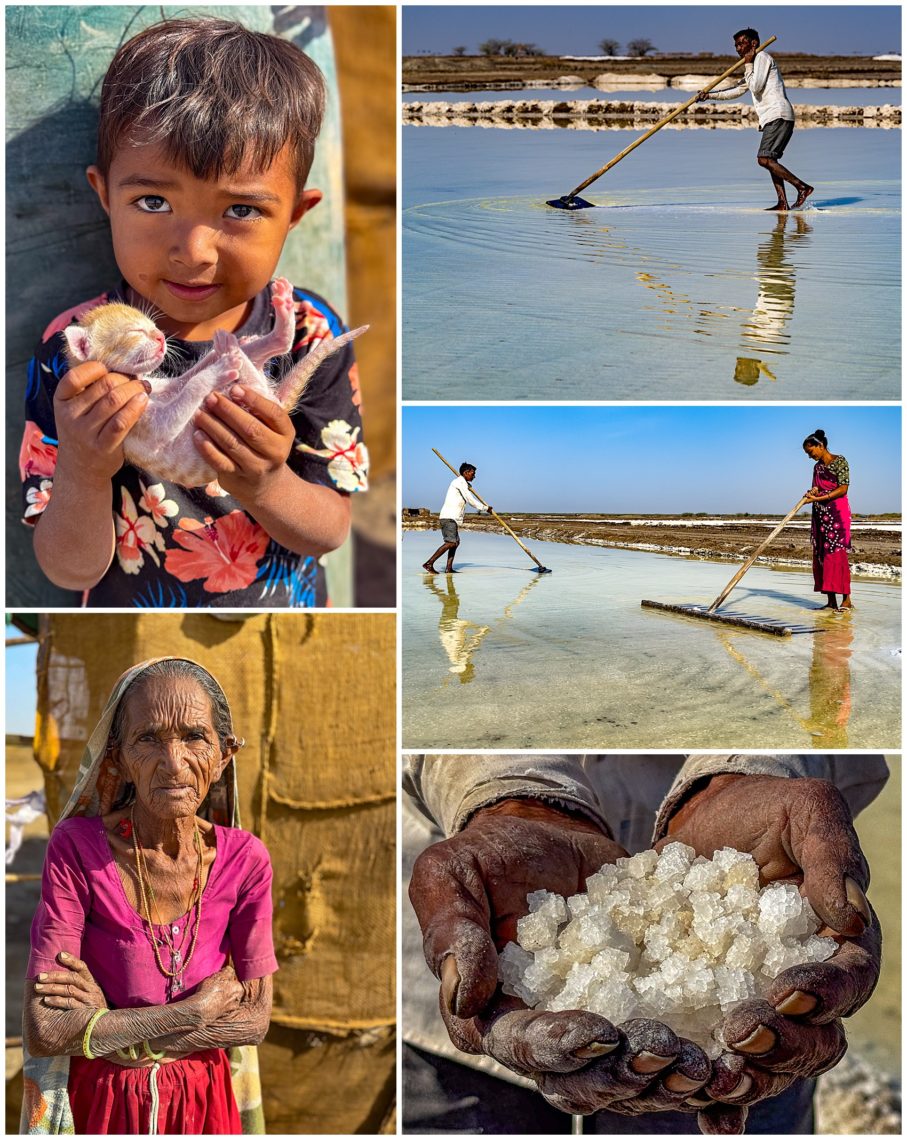
Bordering Pakistan and India is a salt marsh known as Rann of Katch (Dasada). Formerly part of the Arabian sea, the land uplifted and the water dried up, leaving behind vast areas encrusted with salt crystals. The area is reputed to be one of the largest salt deserts in the world.
Today, farmers in this region still harvest salt from the ground water and produce 76% of India’s salt. Salt harvesting is incredibly hard work in temperatures up to 40 degrees celsius (over 100 degrees Fahrenheit). The farmers here are using custom rakes to break up the salt crust (top-right and middle-right), into smaller crystals (lower-right). These farmers only make $4 per ton. They seldom live longer than 60 years of age, encountering serious health issues, having little protection gear against the sun or salt.
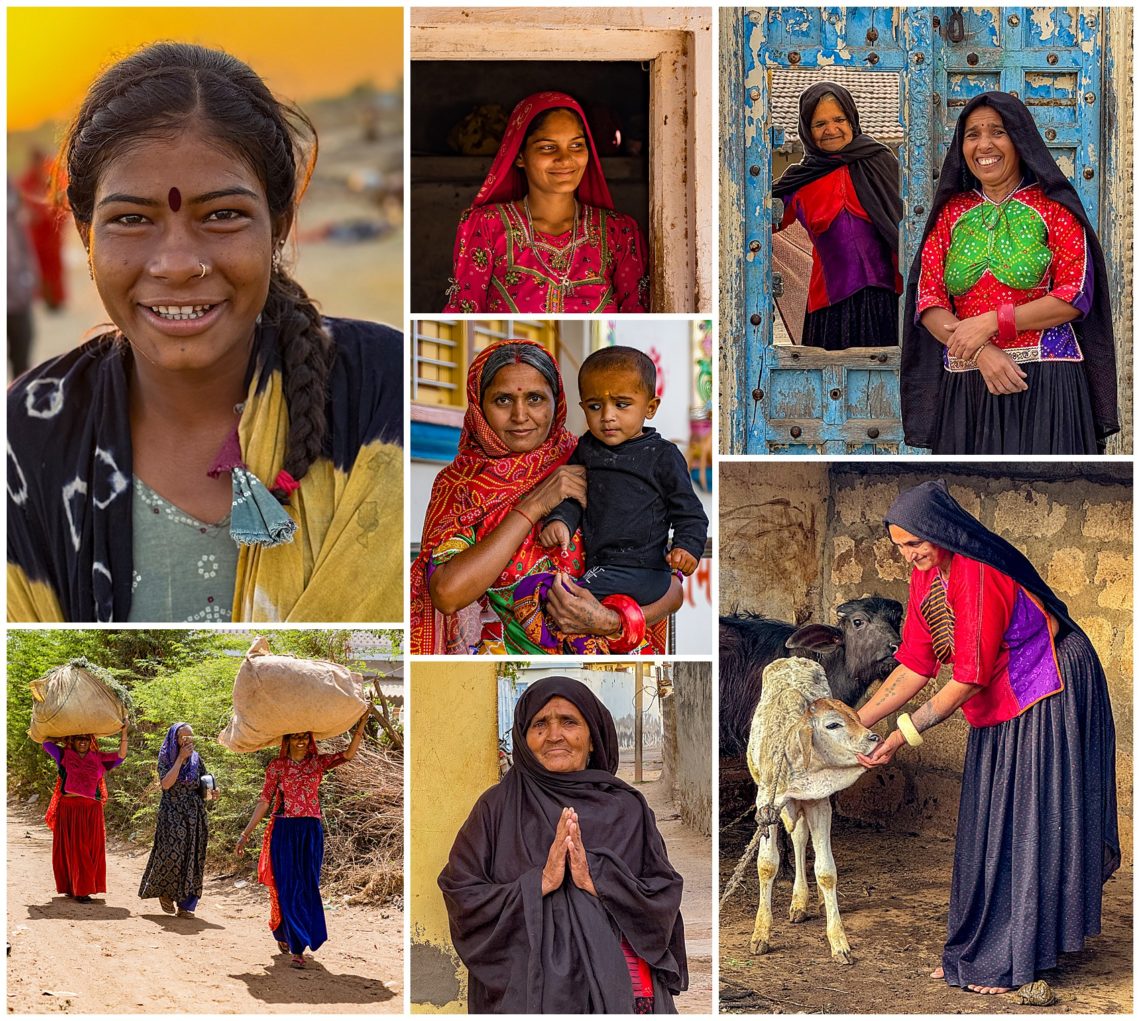
Each tribal village is distinguished by the colors and patterns of the costumes the women wear. What is remarkable is the vibrancy of the colors the Indian women wear in their every day life.

As poor as the villages are, the people all seem to be happy and welcoming.

Mandvi Beach is one of the most popular holiday destinations for Indians and is known for its water sports and great sunsets. Camel rides are quite popular (middle-right). However the camels are decorated to the tees for tourists.
Of course, all we were looking for our sunset image with the silhouette of a camel. Mehmet therefore hired the ugliest camel on the beach. It was hilarious watching Francis and Mehmet posing the camel and owner for our sunset shots, as the camel was stubborn, and the owner struggled to control his camel. The resulting sunset photos are top right and bottom left. Enroute, we found an active ship building site where wooden boats were designed for shallow water. The large boats take years to build, and the wooden boats appeared quite weathered.